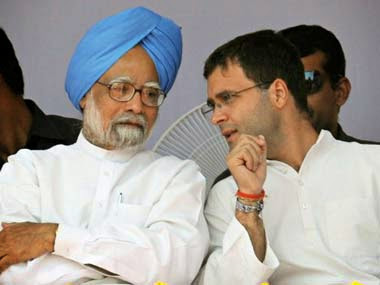Last time I said it, it sounded like a terrible cliche. But, the six months that lie between now and the general elections scheduled for March-April 2014 do indeed seem like a lifetime. And, despite the fact that a major indicator -- results of the elections to four state assemblies in November and December, 2013 -- is still in the works, some indications of the April 2014 hustings are already acquiring a distinctive shape.
So here is the prognosis (and I reserve the right to update it as the months roll out): 2014 will be more like a semi-final and the final will be played out only in 2016. Which means the new government -- whichever combo it is -- will not survive for too long. It will be done in by its own inherent contradictions, much like some of the previous short-lived formulations.
There is a piece in FirstPost already hinting at it (read it here) also, though the overall thrust of the piece is about the souring relations between the Gandhi family members and prime minister Manmohan Singh. But, we've already covered it in an earlier posting about how and why the ordinance was canned by Rahul Gandhi.
So, why am I expecting an anti-climax in 2014?
Look at it this way. Narendra Modi and his followers are desperately trying to convert the elections into a presidential format -- an exclusive battle of wits between him and Rahul Gandhi, or NaMo versus Raga, somewhat like the next highly-billed heavyweight bout at Las Vegas. BJP hopes this format will help it iron out some of the wrinkles presented by a fractured Indian polity, notably the rise of regional parties and coalition politics of the past 20 years. From all available accounts, the Modi camp wants at least 200 seats and the only way to go about it is to pitch him mano a mano with the leader of the ruling party.
Narendra Modi (left) and Rahul Gandhi (Photographs courtesy PTI Photos)
Yet, too many regional issues might still take precedence. For instance, the Telangana-Seemandhra fissures will surely be priority Number One for the Andhra voters, Delhi be damned. So, despite Chandrababu Naidu hitching his wagon to the NaMo star early in the race, Jagan Reddy might be holding most of the aces. In Bihar, while Lalu has been put away, the usual concerns of poverty, lawlessness, entitlements, etc will still dominate the campaign rhetoric. Uttar Pradesh will be battling the after-effects of the Muzzafarnagar riots. Post Phailin, voters in Orissa are still picking up the pieces. Mamata will bring a number of MPs from West Bengal to the negotiating table, even if they're a diminished lot. In Maharashtra, Raj Thackeray's MNS and Sharad Pawar's National Congress Party are both gearing up to corner as may negotiating chips as possible.
These factors have already been put into play and the BJP's attempts to turn this election into a NaMo-versus-RaGa spectacle might not yield any dividends. At least, not yet.
Congress, on the other hand, leaves behind a terrible record of governance. Their feeble attempt to win votes through the cash entitlement route can be a winner but not if some other narrative overwhelms it. And, BJP is trying to do just that with its unwavering focus on corruption during the UPA years. Congress has also conveniently found its straw-man in Manmohan Singh, and is fervently hoping that RaGa's family connections (hence his continuing references to his father's and grandmother's assassinations), his faux earnestness and his boyish charm will win the day.
However, both NaMo or RaGa will have to contend with a number of regional satraps with increased negotiating power. Expect a flurry of post-poll arrangements, tie-ups, understandings. And, this is likely to erode the decision-making powers of whichever government occupies the corner office. This is not an altogether welcome development, given that the country is looking forward to some decisive actions, some measures that will help nudge the economy back into growth mode.
Alongside, expect prolonged and public bickering over who gets which ministry. Most political parties still view governance as an entitlement to loot. This is evident from the fact that most leaders have inducted their sons and daughters as their successors. This rather unseemly squabbling over fish-and-loaves of office will also be another reason for the dissolution of the government in power.
On to 2016 then. In the meantime, enjoy the show. And keep an eye on that chap called Arvind Kejriwal. He seems to be just warmin' up.


